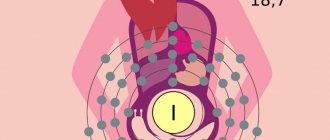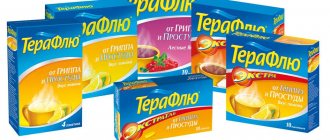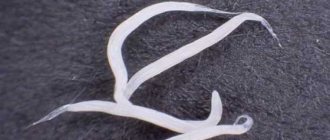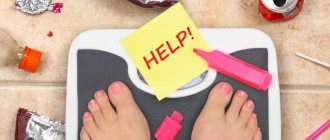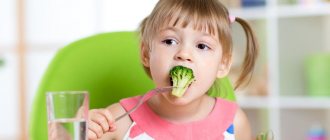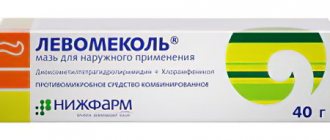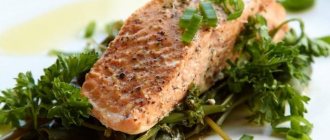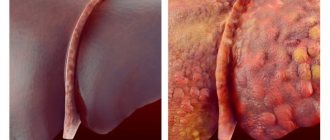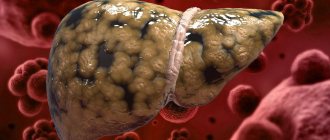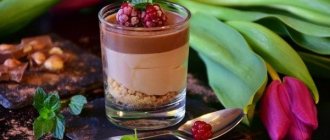Cholecystitis is a rather complex disease that requires a mandatory diet, which helps improve the patient’s condition. However, if proper nutrition is not followed, a number of complications arise. The basis of the main diet is to eat foods that help dilute bile and block inflammation. In this case, the patient must adhere to a diet that does not complicate the digestive process.
Three main areas of diet:
- Relieves the liver and other digestive organs.
- Normalization of bile levels.
- Improving the performance of the gastrointestinal tract.
Nutrition for cholecystitis: list of products
Features of diet therapy
For symptoms of cholecystitis, diet therapy is an important component of therapy. It is prescribed for acute forms of the disease, exacerbations of chronic cholecystitis, cholangitis.
The main diet for people with cholecystitis is table No. 5 and its types. The diet for inflammation is selected individually depending on the stage of progression of the pathology and the characteristics of its course.
Diet therapy eliminates any irritants, which is why food needs to be steamed, and before eating, food needs to be wiped or finely chopped. Spicy and fatty foods are excluded, and in case of cholelithiasis, you must additionally avoid egg yolks and vegetable oils, which have a strong choleretic effect, otherwise hepatic colic may occur.
Chronic form of the disease: how to eat properly
Remission and exacerbation are the main stages of the pathological process. Despite this, the approximate menu for the chronic course of the pathology is practically no different from the dietary intake for the acute form of cholecystitis. When partial remission is noted, the patient adheres exclusively to diet No. 5, without using diet No. 5a.
It is important! To prevent complications, lifelong diet No. 5 is used as a preventive measure.
Features of “diet number five”
Sample diet menu No. 5
The main vector of nutrition is aimed at minimizing liver loads, getting rid of pathological inflammation and stabilizing the gastrointestinal tract. The principles of dietary nutrition are based on the following factors:
- Small and regular meals (experts recommend eating food at the same time all the time).
- Use only vegetable fats for cooking.
- Based on the individual characteristics of the patient, namely weight, height, age and gender, the number of required daily kilocalories is determined. On average, this figure fluctuates around 2800 kcal.
- The basis of the diet is fresh vegetables and fruits.
- The patient regularly needs to drink up to three liters of fluid per day.
- Gradually give up salt and salty foods.
- Dishes are prepared exclusively using a double boiler or multicooker without frying.
- Food consumed should be acceptably warm. Eating hot or very cold foods is contraindicated.
Diet goal No. 5
Note! The patient’s internal state is important, since eating food without appetite and desire will not bring any benefit.
Video - Diet No. 5 according to Pevzner
Diet during an exacerbation
Acute cholecystitis can develop as an independent disease or be an attack of chronic cholecystitis. A characteristic symptom is pain in the right hypochondrium. Often the pain radiates to the shoulder blades, shoulders and neck. In this case, a metallic taste or bitterness may appear in the oral cavity. Patients also experience nausea, vomiting, belching, diarrhea and high body temperature, yellowing of the skin and mucous membranes of the eyes.
If you have the first signs of acute cholecystitis, you should consult a doctor, since self-medication in such a case is unacceptable. Mostly, patients with this pathology, especially in severe form, are hospitalized. They are prescribed a whole range of measures, a number of medications that relieve pain and eliminate the inflammatory process, and a special diet.
A diet during an exacerbation of the disease involves a complete refusal to eat. Fasting should last for 2-3 days. At this time, only warm drinks are allowed - rosehip decoction, non-acidic juices diluted with water, weak tea and herbal infusions. The amount of liquid consumed daily should be at least 2 liters.
On the 3rd–4th day of treatment, the patient is allowed to introduce semi-liquid porridges cooked in water, light vegetable soups and jelly into the diet. In some cases, milk may be added to porridge. All products must be boiled well and then ground. If you have cholecystitis, it is advisable to eat in small portions at least 5 times a day. Gradually, lean meats, cottage cheese, and fish are added to the diet.
Diet options for exacerbation of the disease
From the classification of diets according to Pevzner, table No. 5 is suitable for cholecystitis. It allows for options and changes if inflammation of the gallbladder occurs simultaneously with pancreatitis or cholelithiasis. A mandatory requirement is the preliminary crushing of food (wipe), avoidance of fatty, spicy foods, and split meals 5-6 times a day in small portions.
Cooking food only by steaming or boiling. A categorical ban on everything fried and smoked. If there are stones in the bladder, eggs are excluded from the list of products for cooking, the volume of vegetable oils is reduced, because they have choleretic properties and contribute to the occurrence of painful attacks.
Diet No. 5b
It is prescribed during the acute stage of the disease after a 1–2-day fast (only drinking was allowed), when the patient is in the hospital on bed rest, usually for 4–5 days. The amount of carbohydrates is limited to 200 g; easily digestible types (sugar, honey, jam, preserves) are prohibited.
Reduced content of proteins (80 g), fats, salt (meals are prepared without salt). Mechanical processing of products on the menu allows the preparation of soufflés, vegetable purees, and soups from cereals boiled to the point of mucus. The energy value of the daily diet is reduced to 1600 kcal. The diet includes 2.5 liters of liquid due to: sweet tea, berry and fruit juices, rosehip decoction, mineral water with released gas.
Patients with cholecystitis during exacerbation are advised to drink plenty of fluids
The diet is based on pureed liquid porridges (semolina, rice, oatmeal) in water, without oil, but with the addition of milk, slimy cereal soups, vegetable juices, fresh compote, fruit jelly. By the fourth day, dried wheat bread or crackers, low-fat cottage cheese, and limitedly pureed boiled meat or fish are added.
Diet No. 5a
Prescribed on the 8th–10th day of exacerbation, lasts 7–30 days. The patient's condition is assessed as incomplete remission. Compared to No. 5c, it expands, but excludes any products:
Diet for gallbladder dyskinesia
- activating fermentation and putrefaction in the intestines (cabbage, millet porridge, legumes);
- containing a high concentration of extractive substances (rich broths from meat, fish, mushrooms);
- containing essential oils (onion, radish, garlic, radish);
- stimulating the secretion of bile and its secretion (culinary spices, horseradish, mustard, pepper, pickled and salted homemade preparations).
Not recommended are fatty meats, offal (liver, kidneys, brains), canned food, sausages, sour varieties of fruit, especially those containing a lot of fiber (cranberries, citrus fruits, plums, prunes), fatty dairy products (sour cream, cream, cottage cheese), carbonated drinks , coffee, strong tea, cocoa.
The diet for exacerbation of cholecystitis allows you to include in menu 5a:
- dried wheat bread (crackers);
- pureed vegetable puree soups from potatoes, zucchini, pumpkin, carrots with the addition of boiled cereals;
- meat dishes from beef, turkey, chicken in meatballs, steamed cutlets, meatballs, soufflé, mashed potatoes (boiled fish and poultry are allowed to be eaten in pieces towards the end of the term);
- whole milk, kefir, yogurt, low-fat cottage cheese;
- from eggs you can prepare a steam omelet from the white part only, 1 yolk is added to soup or porridge;
- boiled porridge from pureed cereals (buckwheat, rice, oatmeal) is cooked in diluted milk;
- milk vermicelli;
- vegetable purees from beets, cauliflower with potatoes, pumpkin and zucchini are pre-boiled and cut into pieces;
- raw fruits, but only mashed or baked in the oven;
- dried fruit compote, sweet berry and fruit jelly;
- butter is added to the plate at the rate of no more than 30 g per day;
- sweets (honey, jam, sugar, marmalade, marshmallows) in moderation.
During the day you can drink weak coffee with milk, tea with lemon, rosehip infusion, and sweet juices. A month later, as the symptoms of inflammation subside, the patient is transferred to permanent table No. 5, which should be adhered to throughout his life.
Nutrition for chronic cholecystitis
For patients with chronic cholecystitis, it is important to prevent exacerbation of the pathology. Diet therapy allows you to restore the function of the gallbladder, normalize the secretion of bile, activate metabolism, and reduce the load on the liver, stomach and intestines. To ensure this, you need to adhere to several rules:
- There should be at least 5 meals per day, but the portions should be small to reduce the load on the gallbladder and intestines.
- A person with cholecystitis should consume no more than 3.5 kg of food per day (liquid is already included in this amount).
- The patient should have 3 main meals and 2 intermediate meals per day (these are snacks, during which you can eat sweet fruits, cookies, and drink kefir).
- It is necessary not only to remember the entire list of permitted products, but also to be able to prepare them correctly. You can only eat boiled and steamed dishes. Some people (who have a period of remission lasting more than 1 year) can eat baked vegetables and meat with fish, but during preparation in this way it is forbidden to add additional fats and oils to food.
- Vegetable oils have a choleretic effect, so they can be used in salads, but it is strictly forbidden to use them after heat treatment.
- The food temperature should not be too hot or cold.
- Vegetables should be included in the diet at every snack - they can be raw, stewed or boiled. Experts recommend eating avocado daily.
- Meat and fish contain extractive substances that irritate the gallbladder. Because of this feature, they need to be cooked by boiling or steaming. It is not recommended to eat broths during the first few weeks of stable remission, and the chicken should be skinned.
Basic principles of diet for cholecystitis
Complete digestion of food in the human body occurs under the influence of gastric juice, pancreatic enzymes and bile, and therefore turns out to be impossible if the gallbladder is malfunctioning. Improper and irrational nutrition in pathologies of the hepatobiliary system leads to pain, nausea, vomiting and diarrhea.
The main objective of a therapeutic diet is to ensure functional rest of the organs of the hepatobiliary system, relieve unpleasant symptoms and accelerate the healing process.
In order to create the right diet, it is important to know the principles of therapeutic nutrition for cholecystitis:
- You need to eat often and in small portions. You need to add snacks to your usual three meals a day. Eating small portions of food stimulates the gastrointestinal tract, prevents thickening of bile and the formation of stagnation.
- The routine is extremely important. You need to eat at regular intervals at certain hours. Snacking on the go should be avoided.
- It is necessary to exclude from the diet everything spicy, fatty, smoked and pickled, since this food can lead to a worsening of the condition and the development of complications.
- You should increase the amount of foods rich in protein and vitamins in your diet.
- When preparing a diet, preference should be given to vegetable fats, which can normalize cholesterol metabolism and have a mild choleretic effect.
The diet for cholecystitis is aimed at normalizing the digestion process in the patient’s body, improving intestinal motor function, stimulating the outflow of bile, and preventing congestion and the process of stone formation.
The specialist creates an individual diet based on dietary recommendations for cholecystitis. It depends on the stage of the process, the presence of complications, concomitant diseases, tolerance to certain foods, as well as the patient’s taste preferences.
Nutrition after surgery
For calculous and acalculous cholecystitis, cholecystectomy is performed according to indications. After surgery, you should not eat for 12 hours. Then, to satisfy your hunger, you are allowed to eat porridge, vegetable soup or drink jelly. After 5 days, you can add vegetable puree, cottage cheese, dietary meat and fish dishes to the menu.
In the first 3 months, the attending physician will prescribe table No. 5. Strict adherence to diet rules and fractional meals are important for restoring the functioning of the gastrointestinal tract. After this period, the doctor will determine whether any relief is possible, but the patient will have to follow the diet for the rest of his life.
Alcoholic drinks are strictly prohibited in the first 2 years after surgery. In the future, the restriction may be relaxed: in some cases, the consumption of red wine and non-alcoholic beer will be allowed. The body of many patients who have undergone surgery does not tolerate alcohol well.
Recipes for pancreatitis
Healing compositions made from honey with the addition of other beneficial ingredients effectively help in the treatment of pancreatitis.
Water with honey
Add 50 g of honey to ½ glass of heated water and pour into a thermos. After a day, the medicinal drink is ready. It is consumed by diluting 1 serving of honey water in 5 servings of water or milk.
Honey with agave
For preparation, you will need juice or leaves of an adult agave that is at least 5 years old. It is advisable to take raw honey for mixing with aloe juice - it contains more useful microelements.
Wash aloe leaves (choose the densest ones, from the bottom of the trunk), pass through a meat grinder, and combine with honey. The ingredients take 50 g of each. Consume at least 40 minutes before meals. Such treatment is indicated at any age, and in small quantities it can be given even to a child.
Choleretic decoction
For pancreatitis, treatment of the pancreas with honey can be carried out using a special decoction. Participating in the preparation:
- a glass of boiled water;
- honey – 50 g;
- chamomile flowers (St. John's wort, yarrow, hawthorn, wormwood, dandelion or licorice roots) - 2 tablespoons.
To obtain a choleretic agent, the medicinal mixture is poured with boiling water and heated for ¼ hour in a water bath, covered. The resulting drink is left to infuse for 0.5 hours, then filtered.
Before taking, the composition is diluted with an equal amount of boiled water, honey is added in the specified amount. Treatment course: 0.5 cups between meals. Duration: 1 month, then a break for 30 days and resumption of treatment.
In folk medicine, there are several ways to use propolis to treat pancreatitis.
With aloe
To prepare the tincture, you need to take aloe juice (1 tbsp) and honey. Mix the prepared ingredients thoroughly. After the consistency becomes homogeneous, the product must be allowed to stand.
With water
It is generally accepted that water is very useful. However, it must be remembered that the water should be no warmer than 35 degrees, because otherwise, all the beneficial properties of honey will be lost.
With milk
The drink contains lysozyme, which promotes rapid healing of the mucous membrane. Milk contains essential, easily digestible proteins. Together with honey, the product helps with metabolic disorders, heartburn and bloating.
Milk and honey are beneficial individually, but when taken together, the healing properties are enhanced several times.
With propolis
To prepare, take licorice root (20 g), fennel fruits (20 g), linden flowers (20 g), peppermint (20 g). Mix everything until smooth.
With agave
To prepare, you need to prepare honey and agave in equal proportions, mix and infuse for three hours. Take a teaspoon three times a day.
Choleretic decoction
You will need valerian officinalis (35 g), common hops (30 g), meadow clover (35 g). Pour half a liter of boiling water over a tablespoon and leave for 20 minutes. Then strain and take three times a day with a teaspoon of honey.
List of approved products
The chronic form of the disease may be accompanied by an exacerbation of stomach ulcers if you eat large amounts of raw fruits, vegetables and rye bread. The food is mainly steamed, but can be eaten boiled. Proper nutrition for cholecystitis includes the following dishes and products:
- Wheat bread, in some cases it is acceptable to use rye bread. It is allowed to eat only stale bread to prevent bloating. The diet is expanded with non-food products containing meat or cottage cheese, and cookies.
- Porridge. Rice, semolina, millet and oatmeal are allowed for consumption. You can use them to make puddings or add sweet fruit to porridge.
- Pasta. They can be either baked or boiled, but not fried. Many people first boil them and then, if necessary, heat them in a frying pan; such heating is contraindicated for patients with cholecystitis.
- Soups. They are prepared exclusively with vegetable broth and may contain pasta, cereals or vegetables. To prevent the disease, dairy varieties with cereals are used. Cabbage soup and beetroot soup are also acceptable.
- Eggs and omelet.
- Sour cream, fruit and milk sauces. If according to the recipe they contain flour, then it should not be fried during the cooking process.
- Meat and fish. Eating lean meats (for example, rabbit or veal) has a positive effect; poultry meat is especially valuable. In addition, it is advisable to include fish in the menu, preferably sea fish. Meat and fish need to be baked or boiled. It is recommended to cook food in whole pieces, but steaming meatballs or cutlets is allowed.
- Dairy products. For cholecystitis, it is allowed to consume mild types of cheese, kefir, yogurt, dry and condensed milk. For variety, you can make dumplings, soufflés or puddings.
- Sausages. You can eat doctor's sausage and ham. Before purchasing, you need to look at the composition of the product and avoid sausages that contain a large number of chemical additives.
- Beverages. Green, weak types of black tea (you can add lemon), rosehip decoction, compotes and juices without sugar, jelly.
- Seeds. Pumpkin, flax and sunflower seeds.
- Vegetables. Cucumbers, potatoes, white and cauliflower, tomatoes, zucchini, beets, carrots. Onions can be added to food, just boil them first. Vegetable salads are seasoned with sour cream or vegetable oil.
- Dill and parsley.
- Sweets. These include honey, jam, marshmallows, jelly and marshmallows.
- Fruits and berries. Currants, plums, apples, pomegranates, strawberries, bananas (no more than 1 piece per day).
Acute cholecystitis: how to eat properly
When the disease is in an acute stage, nutrition should be selected as carefully as possible so as not to overload the gastrointestinal tract. The acute phase is characterized by increased pathological inflammation in the gallbladder. As a result, a malfunction of the biliary organs occurs. Thanks to a special diet, rest is established for the diseased organ. In this case, drinking regime is very important.
The list of preferred fluids for cholecystitis includes:
- still mineral water;
- juice from fruits and berries;
- tea without sugar, weak;
- rosehip compote.
List of products for cholecystitis
On the third day, the exacerbation subsides, therefore, the diet expands. Meals can start with the following dishes:
- berry mousse;
- light porridge;
- low-fat cream soups;
- fruit jelly;
- lean type of meat that is cooked using a double boiler;
- boiled fish;
- cottage cheese with a minimum percentage of fat content;
- white bread croutons.
For seven days, the patient eats fractionally, and then switches to diet No. 5g (only during exacerbation), if the disease has not passed the stage of complete remission. This diet is followed until the patient fully recovers. The recovery period takes three to four weeks. Upon restoration of the functions of the gallbladder, it is necessary to switch to another type of diet, which is defined as “diet No. 5”. This type of nutrition is observed for a long time to avoid exacerbation.
Composition of products and dishes of diet No. 5 ha
It is important! Dietary nutrition should accompany the patient throughout the year. Thus, the risk of exacerbation of cholecystitis is minimized. Often, once the diagnosis is confirmed, the patient has to limit his diet for the rest of his life.
Prohibited Products
Table No. 5 for cholecystitis involves excluding from the daily menu dishes that provoke irritation of the mucous membrane and increase cholesterol levels in the blood. Patients with inflammation of the stomach walls should avoid the following foods:
- Alcohol. Alcohol causes stones to form and promotes their movement in the gallbladder. Because of this, alcohol can be consumed only once every 2–3 months and in a minimal dosage. Some doctors recommend drinking a glass of dry white wine every day.
- Some types of vegetables. If a patient has cholecystitis of the gallbladder, he is prohibited from eating canned and pickled vegetables, green onions, radishes, sorrel, radishes and garlic. This list can be supplemented with spices such as mustard and black pepper. In addition, a person should not eat mushrooms and nuts.
- Fatty meats, offal, lard.
- Legumes (chickpeas, soybeans, asparagus).
- Sour fruits and berries (for example, cranberries).
- Carbonated drinks and industrial juice.
- Broths from fish and meat.
- Baking, confectionery, products containing cocoa. Frequent consumption of sugar disrupts the rheological properties of bile. The allowed daily dosage of sugar is 70 g.
Characteristics of diet No. 5
The main or basic diet for inflammation of the gallbladder is designed taking into account the physiology of the liver and bile ducts, reflex activation of the synthesis and secretion of bile, and the properties of the muscle tissue of the bladder and intestinal walls. The main requirements are discussed below.
Meals must be provided according to a fixed schedule. Portions in volume are reduced to ½ of a regular adult, but the calorie content and composition of the diet is provided by no less than five to six meals a day. Preventing overeating is necessary to restore the reflex outflow of bile from the bladder. When a significant volume of bile is released, a spastic contraction of the bile ducts occurs, and the patient’s pain resumes.
Products for cholecystitis should contain predominantly fats of vegetable origin (sunflower oil, olive oil, flaxseed oil, soybean oil). The polyunsaturated fatty acids included in the composition normalize cholesterol metabolism and have choleretic properties. Of animal fats, only butter is used. Lard and cooking oil are prohibited.
Against the background of stagnation in the bladder, the amount of vegetable oil in the diet is increased to 120–130 g. If there are signs of cholelithiasis, the proportion of animal and vegetable fat should be 3:1. Vegetable oil promotes the movement of the stone and the onset of pain. Since food is prepared only boiled, baked, or steamed, oil is added to the finished dish before eating.
Fatty meats, all vegetables with essential oils, and spices are excluded from food products. In the list of what you can eat with cholecystitis, foods that activate fermentation in the intestines (bakery, milk, grapes, canned food) have been removed. The bulk of useful products for cholecystitis are taken from vegetable dishes and fruits. They sufficiently stimulate the secretory function of bile production in the liver, help eliminate constipation and remove excess bile acids, products of cholesterol metabolism.
Melon is considered a useful melon crop; its use in the form of juice or fresh product enriches the body with thiamine, retinol, vitamin PP, C, riboflavin, and essential microelements. Indicated for constipation because it contains a lot of fiber. If you develop diarrhea, it is better to abstain from melon and watermelon. Vegetables and berries should be boiled and pureed. Juice from blueberries, pomegranates, and quinces is prescribed as having tannic properties.
The trace element silicon, which melon is enriched with, directly affects the improvement of bile outflow
Menu for the week
The food temperature should be moderate (at least 15 °C and no more than 62 °C); excessively hot or cold foods can trigger an attack.
Example of a weekly menu for cholecystitis:
Monday
1st breakfast - semolina porridge with sausage, rosehip infusion or sweet black tea. Snack - apple with 100 g of low-fat cottage cheese. Lunch - boiled chicken fillet with wheat cereal, cucumber and tomato salad, compote. Afternoon snack - sweet crackers, dried fruit jelly Dinner - milk soup, 3 cookies.
Tuesday
1 breakfast - 200 g of lazy dumplings, rosehip decoction. Snack - banana, which needs to be grated on a fine grater and poured with 1 tsp. honey Lunch - steamed rice porridge with apples, compote or green tea. Afternoon snack - baked apple and jelly. Dinner - cabbage salad, 1 egg omelette.
Wednesday
1 breakfast - cottage cheese casserole with 100 g of berries, black tea with milk. Snack - a handful of dried fruits. Lunch - baked chicken with vegetables and compote. Afternoon snack - Brussels sprouts and cucumber salad. Dinner - macaroni and cheese, rosehip broth.
Thursday
1st breakfast - milk porridge with a teaspoon of honey, green tea. Snack - a piece of rye bread, black tea with 1 tsp. Sahara. Lunch - mashed potatoes, lean boiled pork, 3 tomatoes, sprinkled with olive oil and sprinkled with parsley. Afternoon snack - tea and low-fat yogurt. Dinner - baked peppers, rosehip decoction.
Friday
1 breakfast - milk porridge, 80 g of boiled doctor's sausage, weak tea. Snack - 200 g of baked pumpkin, rosehip broth. Lunch - 250 g of chicken, beef stroganoff (100 g), rye bread. Afternoon snack - 3 slices of cheese, black tea with milk. Dinner - vegetable pilaf and a piece of bread.
Saturday
1 breakfast - 300 g of cottage cheese, 4 sushi, green tea.
Snack - chopped carrots (200 g), rosehip broth.
Lunch - soup with lean fish, boiled vegetables (150 g), compote.
Afternoon snack - a few slices of cheese (80 g), tomatoes with dill and parsley.
Dinner - stewed zucchini (250 g), rose hip decoction.
Sunday
1 breakfast - pumpkin pie (200 g), black tea with cream.
Snack - 100 g of dried fruits, sweet tea.
Lunch - steamed cutlets (200 g), salad of cucumbers, cabbage and parsley (30 g).
Afternoon snack - a slice of rye bread, green tea.
Dinner - rice porridge, kefir.
Contraindications to honey treatment
Honey is contraindicated for gallstone disease if large stones are found. Other restrictions on use:
- allergic reaction to pollen, other components;
- hepatitis, exacerbation of gastritis, pancreatitis;
- increased blood clotting;
- diabetes mellitus, weight problems;
- pregnancy;
- children under 3 years old.
Flower nectars exhibit choleretic properties. Examples of varieties are chestnut, cornflower blue and lavender. These products are useful for congestion in the gallbladder. If stones form, use is allowed only with the approval of a doctor. It all depends on the type of dyskinesia, the number, location, size of stones, and concomitant diseases.
Both pancreatitis and cholecystitis are inflammatory diseases in which metabolic disorders occur.
Both diseases are interrelated, often develop simultaneously and have a negative impact on the condition of other vital organs.
Traditional medicine offers comprehensive treatment, which includes antibiotics, diet and physiotherapy.
Traditional medicine also has a wealth of experience in treating serious diseases, based on the use of medicinal herbs and other natural remedies. In the arsenal of traditional healers there are many drugs, including honey. This product is considered almost a panacea for all diseases, so a completely logical question arises - is it possible to use honey for cholecystitis and pancreatitis?
Honey is considered a dietary product that contains a large amount of nutrients, vitamins and enzymes.
With cholecystitis and pancreatitis, diet plays an important role, so we can assume that a bee product is ideal for such diseases. In addition, honey medicine has the following properties:
- heals damaged and inflamed mucous surface of internal organs;
- active substances that honey and propolis are rich in fight bacteria and strengthen the immune system;
- promotes the removal from the body of free radicals formed as a result of the inflammatory process;
- takes an active part in hematopoiesis, improves blood composition;
- normalizes the digestive process, restores metabolism, and significantly improves appetite.
It is important to know that with pancreatitis, honey cannot always be consumed, since the disease has several forms. During an acute attack, the pancreas swells and cannot function normally.
A strict diet is prescribed, excluding any food for several days - this helps the organ recover faster. In such conditions, honey in small quantities can be introduced into the diet only a month after the gland has been restored.
In case of chronic pancreatitis, bee products have a beneficial effect on the gland, but it is necessary to adhere to the application regimen and constantly check the amount of sugar in the blood.
The use of honey does not replace drug treatment, but it can be called a component of complex therapy prescribed for pancreatitis.
Although the product is indeed very useful, it should not be taken in large quantities at once. You can start with 1 tsp.
per day, observe how you feel for several days and, if there is no negative reaction or allergy, take the product according to one of the regimens. Experts recommend the following methods of using honey:
- 1 tbsp. bee product three times a day before meals;
- 100 ml in the morning on an empty stomach and in the evening before bed;
- honey is diluted with aloe juice in a 1:1 ratio and taken for constipation.
One of the bee products used for pancreatitis is propolis. It has antiseptic, antimicrobial and antibacterial effects, reduces inflammation and stops the process of self-digestion of glandular tissue.
Propolis is rich in flavonoids, which strengthen the body's defenses, cleanse the cells of internal organs, and help restore damaged tissues and cells. It is recommended to use natural propolis for chronic pancreatitis, chewing it thoroughly in small portions before eating.
Moving through the digestive system, the substance has an anti-inflammatory and healing effect. As a result, food is well digested, and nausea and flatulence disappear.
Zabrus is a formation of wax that bees use to cover the openings of honeycombs filled with honey.
The product destroys pathogens, restores intestinal peristaltic function, normalizes fat metabolism and hematopoiesis. The honey is chewed for a long time, and the remaining wax can be swallowed.
For cholecystitis, honey is also considered an excellent medicinal and preventive remedy.
The main symptom of this disease is inflammation of the gallbladder, and the use of a bee product has a calming and anti-inflammatory effect on the walls of the organ.
In addition, honey has a choleretic effect, which is very helpful for cholecystitis, relieving pain and eliminating stagnation of secretions. You can take the product every day before breakfast, diluting 1 tbsp. in half a glass of warm water.
You can prepare this medicine: take pure propolis - 10 g, pour 100 ml of alcohol into it and leave to infuse for 10 days. Take the drug for cholecystitis before bedtime, adding 15-20 drops of tincture to a cup of milk. Propolis is useful for cholecystitis because it stimulates the secretion of bile and helps reduce inflammation.
Dish recipes
Vegetable puree soup. To prepare the soup, you need to take zucchini, eggplant, carrots, onions, sweet peppers (2 pcs.), potatoes (5 pcs.), 2 tbsp. l. olive oil, herbs. First you need to prepare the pepper: you need to put it in boiling water, and then in cold water and remove the skin. Cut vegetables into cubes. Boil 3 liters of liquid, put potatoes in a saucepan and add a little salt to the water.
After 10–15 minutes, you need to add all the remaining ingredients, except for the zucchini (they are added 5 minutes before the end of cooking). The resulting mass must be cooled, grind in a blender and add herbs and olive oil.
Stuffed pepper. In order to make this dish, you need to take 6 bell peppers, 0.5 kg of chicken fillet, 3 tbsp. l. boiled rice, carrots and onions (2 pieces each), a glass of tomato juice, 2 cloves of garlic, paprika and bay leaf. Peppers need to be peeled and pierced with a fork. Then you need to mix boiled rice, minced chicken, chopped garlic, and paprika. Chop the onions and carrots, simmer in a frying pan until soft and add tomato juice. You need to stuff the peppers with the prepared minced meat, place it on a baking sheet and bake in the oven for 30–40 minutes.
Baked apples. To prepare you will need 4 large apples, 1 egg, 100 g of cottage cheese, 2 tbsp. l. sugar and cinnamon. You need to cut out the middle of the apples. Beat the yolk with cinnamon and sugar, mix this mass with cottage cheese in a blender. Then you need to pour a little water onto a baking sheet, put the stuffed apples and bake at 180 ° C for 15 minutes.
Squid soup. Ingredients: 100 g cabbage, cucumbers (250 g), squid, greens, 800 ml vegetable broth and salt. The squid needs to be cleaned and cut into small strips. Boil the broth and add cabbage to it, and then cook for 6 minutes. Add squid, chopped cucumbers to the soup, add salt and cook for 4 minutes. The finished soup should be sprinkled with chopped herbs.
Fish souffle. You need to take 30 ml of milk, 90 g of fish, an egg, salt and a piece of butter. First you need to boil the fish fillet, grind it in a meat grinder or blender, add the yolk, milk, salt and butter to the minced meat, mix all the ingredients thoroughly. The white must be beaten and added to the rest of the products. Place minced meat in a frying pan and bake at 180°C. It is permissible to bake the soufflé in special molds and steam it.
Permitted and prohibited products
If you have problems with the gallbladder, you need to have accurate information about your diet. Proper adherence to the diet prevents the development of relapses of the disease.
List of optimal products:
- Lean poultry and fish - boiled or steamed.
- Vegetable soups, borscht or cabbage soup without frying vegetables.
- Unleavened products made from first or second grade flour.
- Desserts: fruit puree, mousses, pastilles, bee products, marmalade.
- Drinks: tea, weak coffee with skim milk, juices.
List of prohibited products:
- Fatty and smoked meat: pork, turkey, mackerel, sturgeon, etc.
- Milk and dairy products with a fat content of more than 6%.
- Fatty baked flour products.
- First courses: cabbage soup or fried borscht, fatty fish soup.
- Desserts: chocolate products, cream products.
- Vegetables with strong taste characteristics: raw onions and garlic, sorrel, radishes, etc.
- Drinks: strong tea or coffee, alcohol, carbonated drinks.
An acute attack of biliary colic can be caused by foods from the prohibited range, as they have a choleretic effect.
Advantages and disadvantages
The positive aspects of diet therapy for cholecystitis include the following:
- The menu is physiologically balanced.
- Easily tolerated by patients.
- Allows you to improve a person’s general condition and prevent exacerbation of the disease.
- Normalizes cholesterol levels in the blood, improves gallbladder function.
Disadvantages of the diet:
- You need to have the skills and free time to prepare dishes.
- Long duration of diet therapy.
How does the product affect organ function?
Honey for pancreatitis in reasonable quantities can prolong the state of remission. In other words, if you have it between exacerbations, they happen less often. This product supports the functions of the pancreas and the performance of the digestive system. The immune system of the body as a whole is also strengthened and damaged connective tissue heals better. Antibacterial properties help resist its degeneration.
By regularly consuming honey, you can improve your blood composition. An established supply of organ tissues with it helps restore natural functions. Metabolism and digestion processes are stabilized.
Recipes for medicinal mixtures
Many doctors are skeptical about traditional medicine, since most patients refuse drug therapy and diet, relying only on their grandmother’s recipes. However, any gastroenterologist will agree that comprehensive drug treatment of cholecystitis and a diet that includes proper consumption of such a healthy product as honey will prevent exacerbation of cholecystitis.
Four simple recipes using honey to normalize digestion and strengthen the body:
- Flaxseed oil – add 10 drops of linseed oil to 1 tablespoon of bee product, mix thoroughly. Take 1 tablespoon in the morning on an empty stomach.
- Milk with honey – dissolve 1 dessert spoon of honey in 100 ml of milk. Try not to eat for 4 hours.
- Infusion of medicinal herbs - pour boiling water over chamomile flowers, add 1 teaspoon of honey, heat in a water bath for 3-4 minutes. If desired, you can use an infusion of rose hips or St. John's wort.
- Honey jelly - add a little starch diluted in water to the milk. Then simmer over low heat for 10 minutes, let cool. Add a little nectar to the jelly and mix thoroughly.
Remedy for pancreatitis
A good remedy that reduces the likelihood of developing pancreatitis is beebread. These are pollen granules stored in honeycomb cells. These granules should be taken in the morning on an empty stomach, without drinking, but dissolving them. A suitable amount would be 1-2 grams. There are also contraindications: low blood pressure, hay fever. If pancreatitis worsens, treatment is stopped.
This method helps:
- Prevent the occurrence of pancreatitis in chronic cholecystitis and after cholecystectomy;
- Extend the period of remission in chronic pancreatitis.
In the absence of any diseases, bee bread is consumed 10 grams per day or even 20.
Beebread and pollen
Pollen, that is, bee pollen, can be eaten in even larger quantities. But again - only in the absence of diseases.
Pollen is digested worse than beebread, and there will be less benefit from it.


